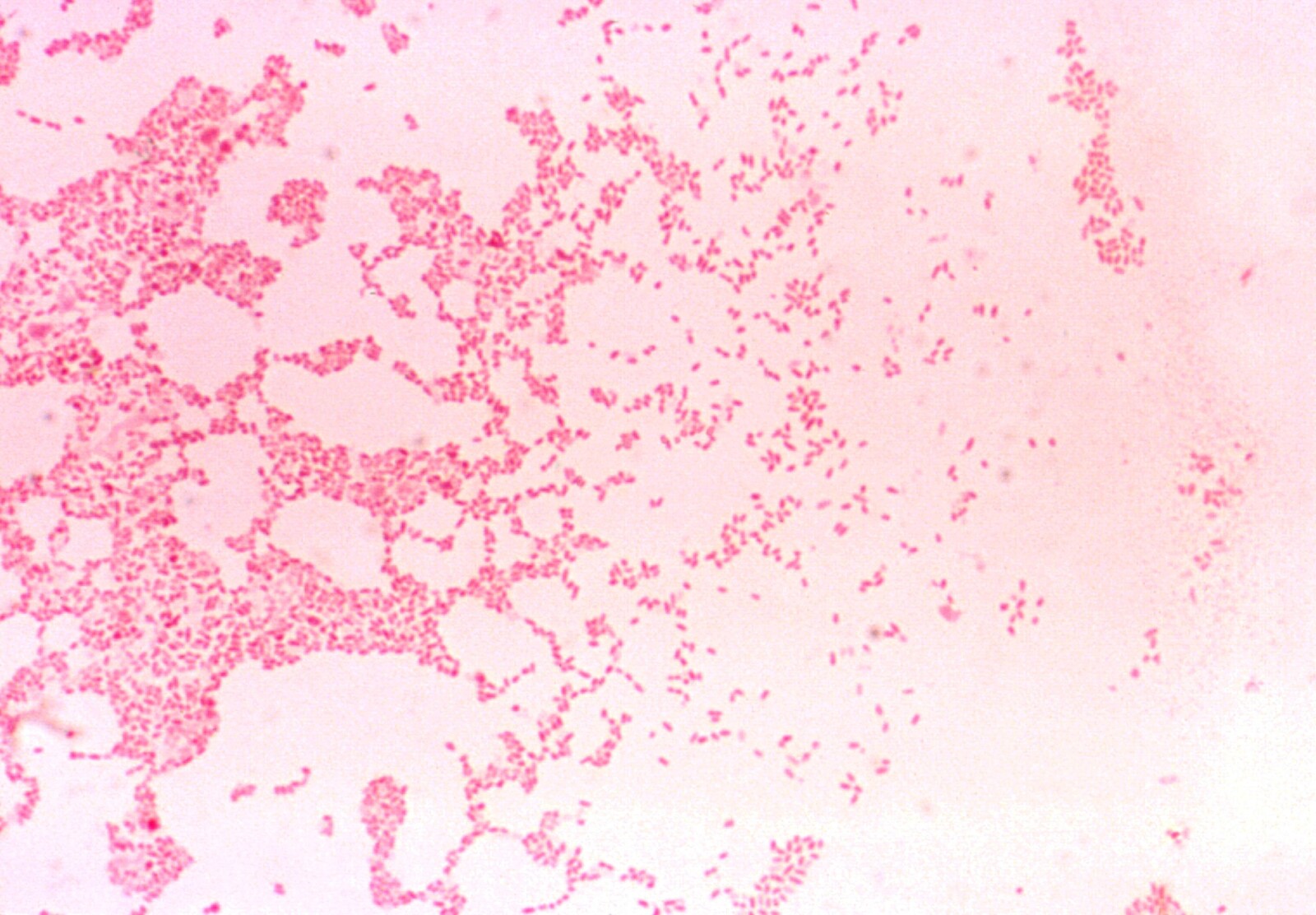Leukemia Due to AFFF
Leukemia, a group of malignancies affecting the blood and bone marrow, has been increasingly associated with exposure to Aqueous Film-Forming Foam (AFFF). AFFF, commonly utilized by firefighters and military operatives for combating fuel fires, contains per- and polyfluoroalkyl Substances (PFAS), which are chemically stable and bioaccumulative compounds linked to several health issues.

Epidemiological research has demonstrated a statistically significant association between AFFF exposure and heightened leukemia incidence, raising concerns about occupational safety. This has catalyzed a reevaluation of its use, the implementation of stringent regulations, and the pursuit of litigation to address the health ramifications. The focus has shifted towards understanding the extent of AFFF-related health risks, advocating for affected populations, and promoting the development of safer firefighting alternatives.
Key Takeaways
- AFFF contains toxic PFAS chemicals and has been linked to an increased risk of developing leukemia.
- Firefighters and military personnel who frequently use AFFF have a nearly doubled risk of developing leukemia.
- Veterans exposed to AFFF at military facilities are eligible for compensation from the VA if they develop leukemia.
- AFFF exposure can also lead to other health effects, such as liver and kidney damage, immune system issues, and developmental problems in children.
Understanding AFFF
Awareness of the inherent risks associated with Aqueous Film-Forming Foam is imperative, particularly in light of its connection to leukemia among frequent users. AFFF composition is primarily scrutinized due to the inclusion of per- and poly-fluoroalkyl substances (PFAS), which are chemicals resistant to heat, water, and oil, conferring AFFF's effective fire suppression capabilities.
However, the toxicity profile is concerning; PFAS are bioaccumulative and have been linked to carcinogenic outcomes, including leukemia. Analytical examination of AFFF's chemical properties reveals that these substances can disrupt human hematopoiesis, potentially leading to malignant transformations in bone marrow cells. It is critical to balance AFFF's firefighting efficacy with its toxicological implications to safeguard those exposed to this foam.
AFFF and PFAS Connection
The link between AFFF use and leukemia is primarily attributed to the presence of PFAS, toxic substances known for their persistence in the environment and accumulation in the human body. A technical analysis of the AFFF and PFAS connection reveals:
- PFAS Toxicity: Scientific research indicates that PFAS compounds disrupt endocrine function and are carcinogenic, leading to an increased risk of leukemia among exposed individuals.
- Environmental Persistence: PFAS chemicals resist environmental degradation, contaminating water supplies, and bioaccumulating wildlife and humans.
- Human Accumulation: PFAS accumulates in human tissues over time, with potential for immunotoxicity and developmental toxicity alongside carcinogenic effects.
- AFFF Alternatives: To mitigate PFAS toxicity, the development of PFAS-free firefighting foams is underway, highlighting the necessity for safer AFFF alternatives to protect human health and the environment.
Leukemia Risk Factors

Frequently, individuals exposed to AFFF and its PFAS content face a heightened risk of developing leukemia due to the toxicological effects of these substances on the human body. The pathogenesis of leukemia following AFFF exposure is linked to the bioaccumulative nature of PFAS, which may induce hematopoietic dysregulation and consequent neoplastic transformations.
To mitigate leukemia risk, prevention strategies are pivotal. These include stringent occupational safety protocols, reduced use of AFFF, and deployment of protective equipment to minimize contact with PFAS. Additionally, systematic surveillance programs that monitor the long-term effects of AFFF exposure are essential for early detection and intervention. The implementation of such preventive measures and rigorous scientific scrutiny can contribute to a reduction in leukemia incidence among affected cohorts.
Firefighter Health Concerns

Firefighters face numerous health risks, one of which is an elevated likelihood of developing leukemia linked to their occupational exposure to AFFF. To mitigate these risks, a multifaceted approach is imperative, involving:
- Enhanced Personal Protective Equipment (PPE): Implementing advanced PPE to shield firefighters from harmful exposure to carcinogenic substances in AFFF.
- Rigorous Training Protocols: Establishment of comprehensive training programs emphasizing the proper handling of AFFF and the associated health risks.
- Robust Firefighter Safety Measures: Deployment of safety measures, including decontamination procedures and health surveillance, to monitor and protect the well-being of firefighters.
- Targeted Public Awareness Campaigns: Launch campaigns to raise awareness about the potential health impacts of AFFF, thereby fostering community support for affected firefighters and advocating for safer firefighting alternatives.
Military Exposure to AFFF

Regarding military personnel, exposure to AFFF has been a substantial concern. The extensive use of AFFF in military training activities has necessitated a rigorous analysis of exposure levels and subsequent health outcomes. Military compensation mechanisms have been instituted to address the ramifications of exposure among service members.
Veterans who have developed leukemia and can demonstrate AFFF exposure at military installations may be eligible for compensation through the Department of Veterans Affairs. Establishing causality between exposure in training exercises and the onset of leukemia is a critical component of the compensation claim process. These claims are not only integral for the financial support of afflicted individuals but also underscore the imperative for enhanced protective measures during training scenarios.
Compensation for Veterans
Eligible veterans who have developed leukemia as a result of AFFF exposure may seek compensation through the Department of Veterans Affairs. The process for obtaining veterans' compensation involves a series of methodical and evidence-based steps:
- Documentation: Veterans must provide medical records confirming a leukemia diagnosis and documentation of AFFF exposure during military service.
- VA Claims Submission: A formal VA claim must be submitted, detailing the nature of the exposure and its link to the diagnosed leukemia.
- Causation Correlation: The claim must establish a clear connection between AFFF exposure and the onset of leukemia, based on scientific and medical evidence.
- Compensation Evaluation: The VA evaluates the claim to determine eligibility for compensation, considering the severity of the condition and its impact on the veteran's quality of life.
Documenting AFFF-Related Illness
Proper documentation of AFFF-related illness is essential for individuals pursuing legal or compensation claims for leukemia attributed to PFAS exposure. Establishing an unequivocal link between AFFF usage and the onset of illness necessitates a compilation of comprehensive evidence. This includes medical records, employment history, and any other relevant documentation that corroborates exposure to AFFF and its long-term effects. Each case of exposure must be meticulously chronicled to substantiate claims and facilitate the legal process.
| Documentation Type | Relevance | Details Required |
|---|---|---|
| Medical Records | High | Diagnosis, treatment history, prognosis |
| Employment History | High | Dates of AFFF usage, roles and responsibilities |
| Exposure Evidence | Medium | Incident reports, witness testimonies |
| PFAS Blood Levels | High | Laboratory results indicating PFAS concentration |
Legal Claims for Treatment

Litigation provides a pathway for individuals diagnosed with leukemia as a consequence of AFFF exposure to seek financial assistance for medical treatments. Pursuing legal compensation involves a systematic approach:
- Filing a Claim: Individuals initiate legal proceedings by filing a claim that details the extent of exposure and the resultant leukemia diagnosis.
- Evidence Submission: Claimants must submit medical and occupational records as evidence to establish a causal link between AFFF exposure and their illness.
- VA Benefits Consideration: Veterans may also be entitled to VA benefits, which require a separate application process demonstrating service-related AFFF exposure.
- Settlement or Trial: Cases may conclude with a settlement or proceed to trial, where compensation amounts are determined based on the severity of harm and impact on quality of life.
Broader Health Implication
Beyond the increased risk of leukemia, exposure to AFFF has broader health implications, including the potential for liver and kidney damage, immune system disruptions, and developmental issues in children. These concerns underscore the necessity for rigorous health surveillance and environmental safety measures.
| Health Concern | Description |
|---|---|
| Liver Damage | Hepatotoxicity due to bioaccumulation of PFAS |
| Kidney Damage | Renal dysfunction from chronic chemical exposure |
| Immune System | Dysregulation of immune response increasing susceptibility to infections |
| Developmental Issues | Potential endocrine disruption impacting growth and development in children |
The environmental impact is noteworthy, with PFAS compounds contributing to persistent ecological contamination. This necessitates ongoing assessment of environmental exposure and its correlation with public health outcomes, emphasizing the urgency for alternative firefighting solutions.
AFFF’s Environmental Footprint

One must consider the lasting environmental footprint of AFFF, as PFAS chemicals persist in ecosystems, contaminating soil and water sources with potential long-term ecological consequences. The meticulous evaluation of AFFF's ramifications must account for:
- Bioaccumulation: PFAS compounds accumulate in organisms, leading to toxic effects and AFFF's impact on aquatic life.
- Hydrological Alteration: AFFF runoff disrupts water quality, affecting entire aquatic systems and potable water supplies.
- Soil Integrity: Persistent AFFF contaminants compromise soil health, impacting plant life and food chains.
- Longevity: The long-term effects of AFFF exposure on ecosystems are profound, due to PFAS's resistance to natural degradation processes.
Addressing these issues requires a confluence of scientific research and stringent regulatory practices.
PFAS Persistence Challenges
Amidst the environmental repercussions of AFFF, the persistence of PFAS compounds presents a challenge to remediation efforts and the protection of public health. PFAS cleanup methods are impeded by the chemical stability and longevity of these substances in the environment, leading to protracted cycles of contamination.
The molecular architecture of PFAS, characterized by strong carbon-fluorine bonds, resists natural degradation processes, thereby complicating the efficacy of traditional decontamination techniques. Analytical strategies must address the robustness of PFAS, necessitating advanced technological interventions to mitigate the long-term effects of bioaccumulation and ecological damage. Precision in detecting and tracing PFAS concentrations is imperative for assessing the extent of environmental and human exposure and for evaluating the success of remediation actions.
Global AFFF Regulations

In response to the health risks associated with Aqueous Film-Forming Foam, numerous countries have implemented regulations to ban or restrict the use of PFAS-containing firefighting foams. These global AFFF regulations aim to mitigate the environmental and health impacts of these harmful substances. As international standards evolve, we observe a trend toward more stringent oversight:
- The European Union has severely restricted PFAS in firefighting foams under the REACH regulation.
- In the United States, the National Defense Authorization Act has mandated the phase-out of PFAS-based AFFF in military applications.
- Australia has introduced a National Environmental Management Plan focusing on the management and disposal of PFAS substances.
- Canada enforces comprehensive guidelines that limit the use and discharge of AFFF to protect human health and the environment.
US Legal Landscape

The complexity of the US legal landscape has been greatly shaped by ongoing litigation related to the health impacts of Aqueous Film-Forming Foam (AFFF) exposure. PFAS litigation has become a pivotal aspect of environmental and toxic tort law, as plaintiffs seek redress for the public health implications of AFFF-associated illnesses, particularly leukemia.
The legal challenges involve intricate scientific and medical testimony to establish causation between PFAS exposure and adverse health outcomes. Courts are tasked with interpreting and applying a multifaceted framework of statutes and case law to a growing body of evidence. The resulting jurisprudence not only affects compensatory mechanisms for affected individuals but also shapes regulatory responses aimed at preventing further harm.
Protective Measures for Users
To mitigate the risks associated with AFFF exposure, firefighters and military personnel must employ comprehensive protective strategies, including the use of specialized equipment and adherence to safety protocols.
- Utilize full-body protective gear to prevent skin contact and inhalation of AFFF compounds, including PFAS.
- Engage in training programs that detail the handling, application, and disposal of AFFF, emphasizing the importance of minimizing exposure.
- Implement strict decontamination procedures post-exposure to reduce the risk of PFAS absorption and potential health repercussions.
- Advocate for the use of AFFF alternatives that are safer and less toxic, while maintaining effectiveness in fire suppression.
These measures, executed with technical precision, are vital for safeguarding against the long-term health effects linked to AFFF, such as leukemia.
Advancing Safer Alternatives
Amid growing concerns over the health risks posed by AFFF, considerable efforts are being directed toward developing and adopting safer firefighting foam alternatives. The objective is to identify formulations that effectively extinguish fires without the adverse health and environmental effects of PFAS compounds.
| Factor | Traditional AFFF | Safer Foam Alternatives |
|---|---|---|
| Firefighting Efficacy | High | Comparable or being tested |
| Environmental Impact | Highly Persistent | Reduced or Non-Persistent |
| Health Risks | Elevated risk of leukemia | Significantly Lowered |
Research funding is being allocated with increased precision to support this critical transition. Analytical studies focus on the technical performance, environmental fate, and toxicological profiles of these new agents, ensuring that fire safety does not come at the expense of public health.
Frequently Asked Questions
How Can Individuals Who Were Exposed to AFFF but Are Not Firefighters or Military Personnel Pursue Compensation or Health Monitoring?
Individuals exposed to AFFF with no firefighting or military background should explore legal avenues to seek compensation. This process typically involves the collection of medical evidence and exposure tracking to demonstrate the correlation between AFFF contact and subsequent health issues.
Engaging legal expertise is critical in navigating the complexities of such claims, ensuring that the technical and analytical aspects of the case are addressed with precision.
Are There Any Specific Genetic Factors That Might Increase an Individual’s Susceptibility to Leukemia From AFFF Exposure?
Genetic predisposition and chromosomal abnormalities may exacerbate susceptibility to leukemia in individuals exposed to carcinogenic substances. While research into specific genetic markers linked to increased risk from AFFF exposure is ongoing, it is understood that certain gene mutations or irregularities can contribute to a heightened risk of developing leukemia. Thorough genetic screening and analysis can offer insights into individual vulnerabilities, informing targeted prevention and intervention strategies.
How Does the Presence of AFFF in a Household Setting, Such as From a Home Fire Extinguisher, Impact the Health Risks for Residents, and What Precautions Should They Take?
The invisible threat of AFFF, lurking in domestic fire extinguishers, raises concerns about exposure levels in the home. Residents should rigorously implement safety measures, including regular checks for leaks and proper storage, to mitigate health risks. A technical analysis underscores the need for precise handling protocols and the importance of limiting exposure to these chemical agents, ensuring a vigilant defense against potential health hazards in the household setting.
What Are the Long-Term Psychological Effects on Individuals Who Have Developed Leukemia or Other Illnesses Due to AFFF Exposure, and Are There Resources Available to Support Their Mental Health?
Individuals facing chronic illnesses like leukemia often experience emotional strain. Long-term psychological effects can include anxiety, depression, and reduced emotional resilience. The importance of support networks, including mental health professionals, peer groups, and family, becomes pivotal.
These networks offer coping mechanisms and psychological support to manage emotional distress. Access to such resources is critical for maintaining mental well-being in the face of ongoing health challenges.
How Is Wildlife Rehabilitation Managed in Areas Where PFAS Contamination From AFFF Has Been Detected, and What Are the Success Rates of These Efforts?
In regions where PFAS contamination from AFFF is prevalent, wildlife rehabilitation necessitates meticulous tracking and thorough contamination assessments. Specialists can ascertain the extent of environmental impact by employing precise analytical methods and tailor rehabilitation strategies accordingly. Success rates vary, largely contingent on contamination levels and the resilience of affected ecosystems. The technical process is complex, aiming to restore ecological balance and ensure the viability of wildlife populations.




